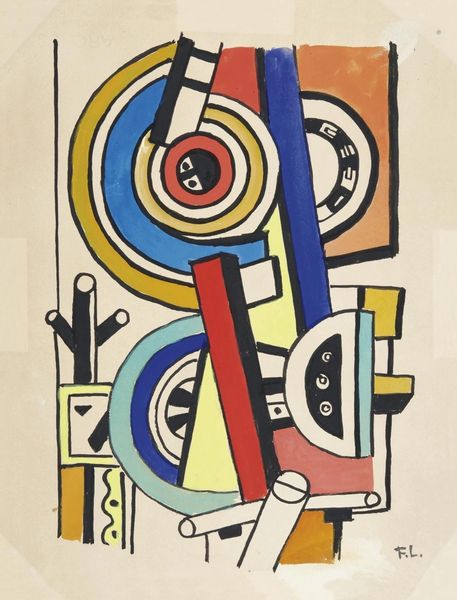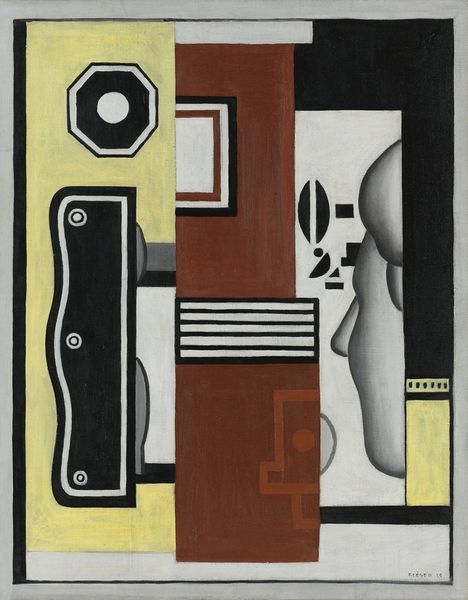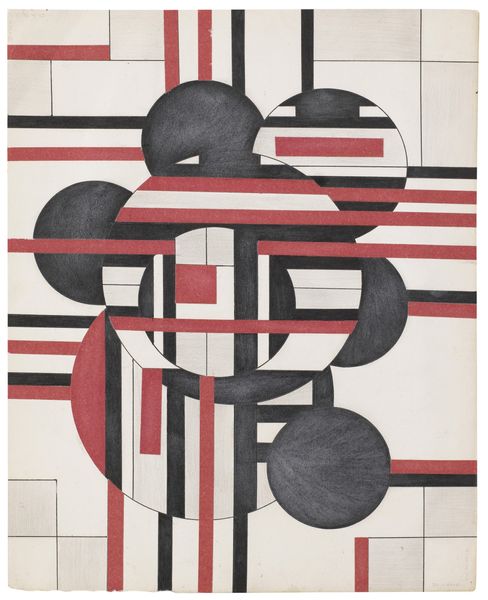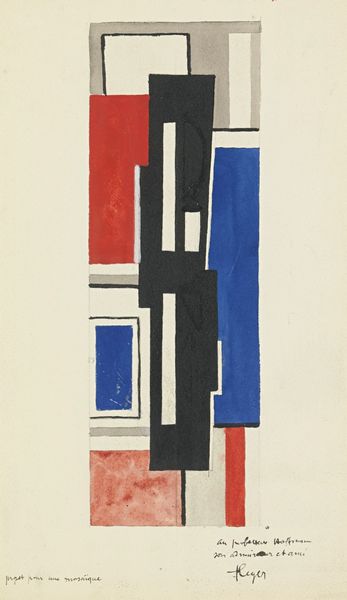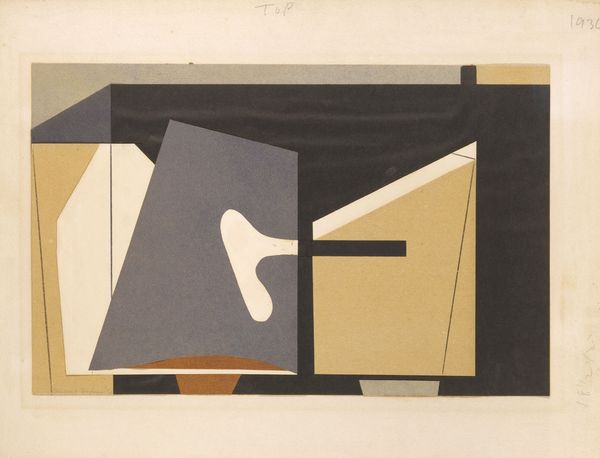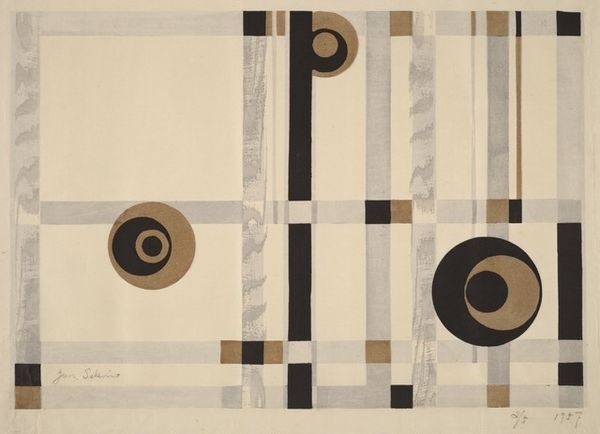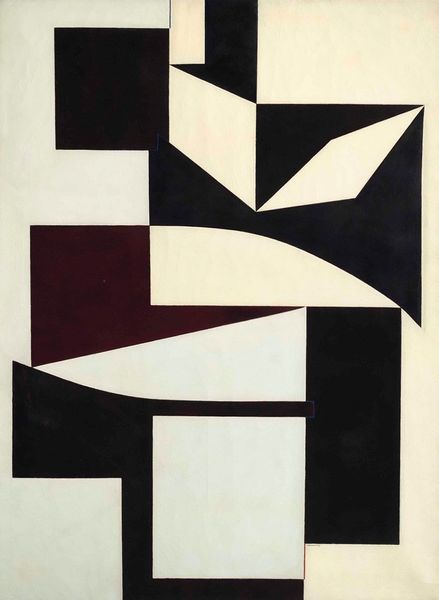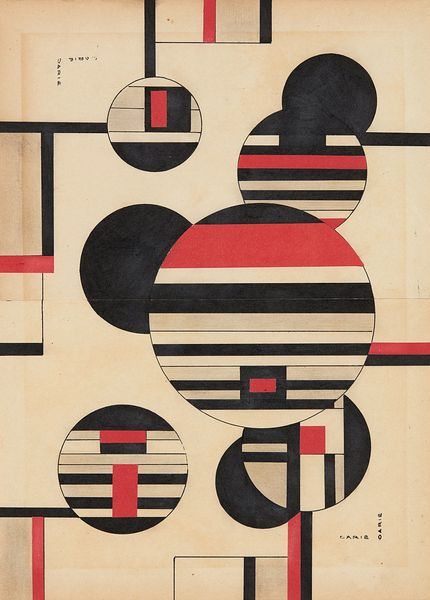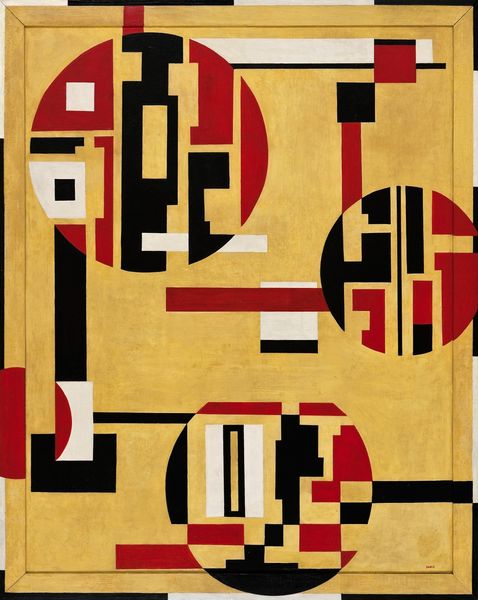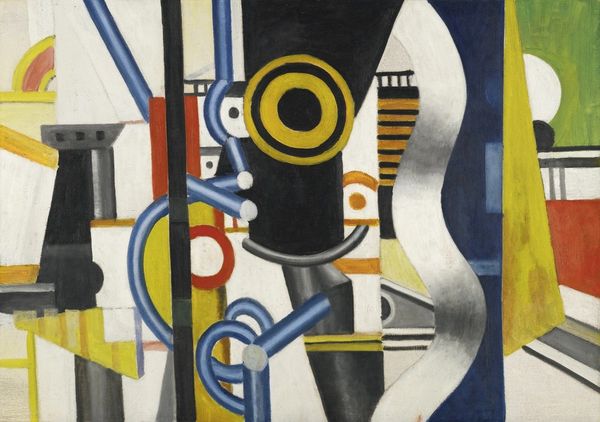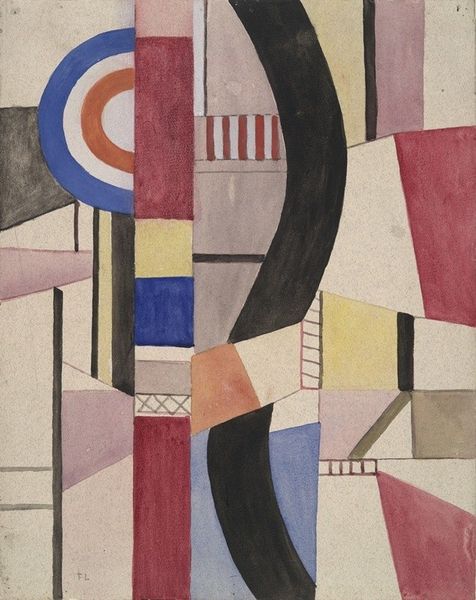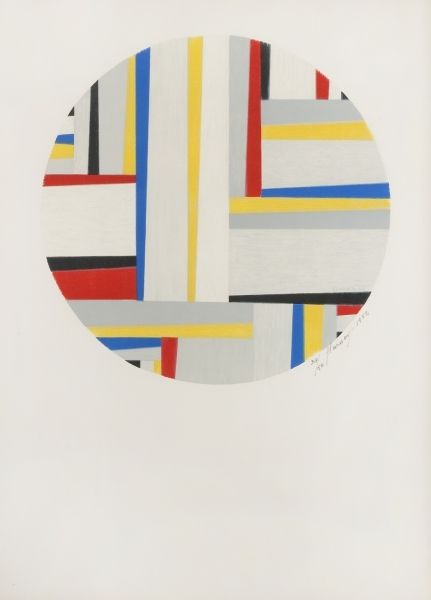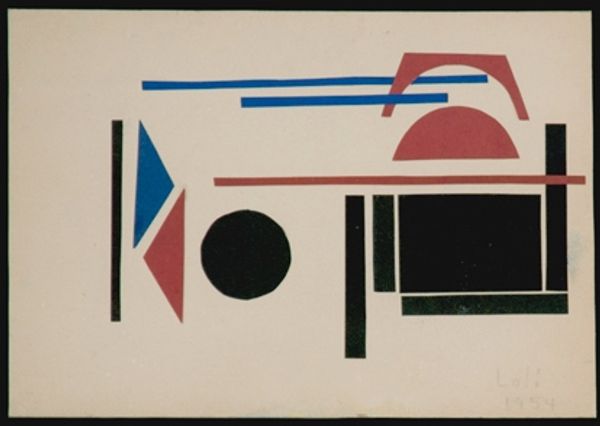
mixed-media, print
#
cubism
#
mixed-media
# print
#
geometric
#
abstraction
Copyright: Modern Artists: Artvee
Editor: This is Fernand Léger’s "Le Vase," created in 1927 using mixed-media print techniques. The shapes and colors are so distinct, but I am struggling to find the vase at first glance! How would you approach understanding this composition? Curator: A fitting question. This piece is a testament to Léger’s formal exploration of Cubist principles. Note how Léger dissects and reconstructs representational forms into a constellation of geometric elements, creating a semiotic interplay between object and abstraction. Consider the vase itself; it is rendered not as a singular, continuous form but as fragmented planes and cylindrical volumes. What do you observe regarding Léger’s use of color? Editor: The colors are quite striking—primary hues like red, blue and yellow paired with earthier tones. Curator: Precisely. Léger employs what he termed "flat colors," areas of unmodulated color that emphasize the two-dimensionality of the picture plane. This deliberate flatness disrupts any illusionistic depth and foregrounds the materiality of the print. Furthermore, observe how the composition is structured around a rigorous grid. The interplay of horizontal and vertical lines creates a sense of architectural stability. Do you think that such lines define the forms in "Le Vase", or, in turn, fracture the form into abstraction? Editor: I see your point, the lines definitely work both ways! It's like a back-and-forth between the vase and an abstract construction of it. Curator: That dialectical tension is at the heart of Léger’s project. The artwork oscillates between representation and abstraction, challenging the viewer to actively participate in the process of meaning-making. The visual presentation makes the eye the subject. What does this artwork tell us about how to observe and understand meaning in visual forms? Editor: I hadn't really thought of it like that. Thanks! I now see that by studying how such primary elements create new meaning, one can go beyond mere form. Curator: Indeed. It is in those spaces of fragmentation and reconstruction that artistic innovation emerges.
Comments
No comments
Be the first to comment and join the conversation on the ultimate creative platform.
